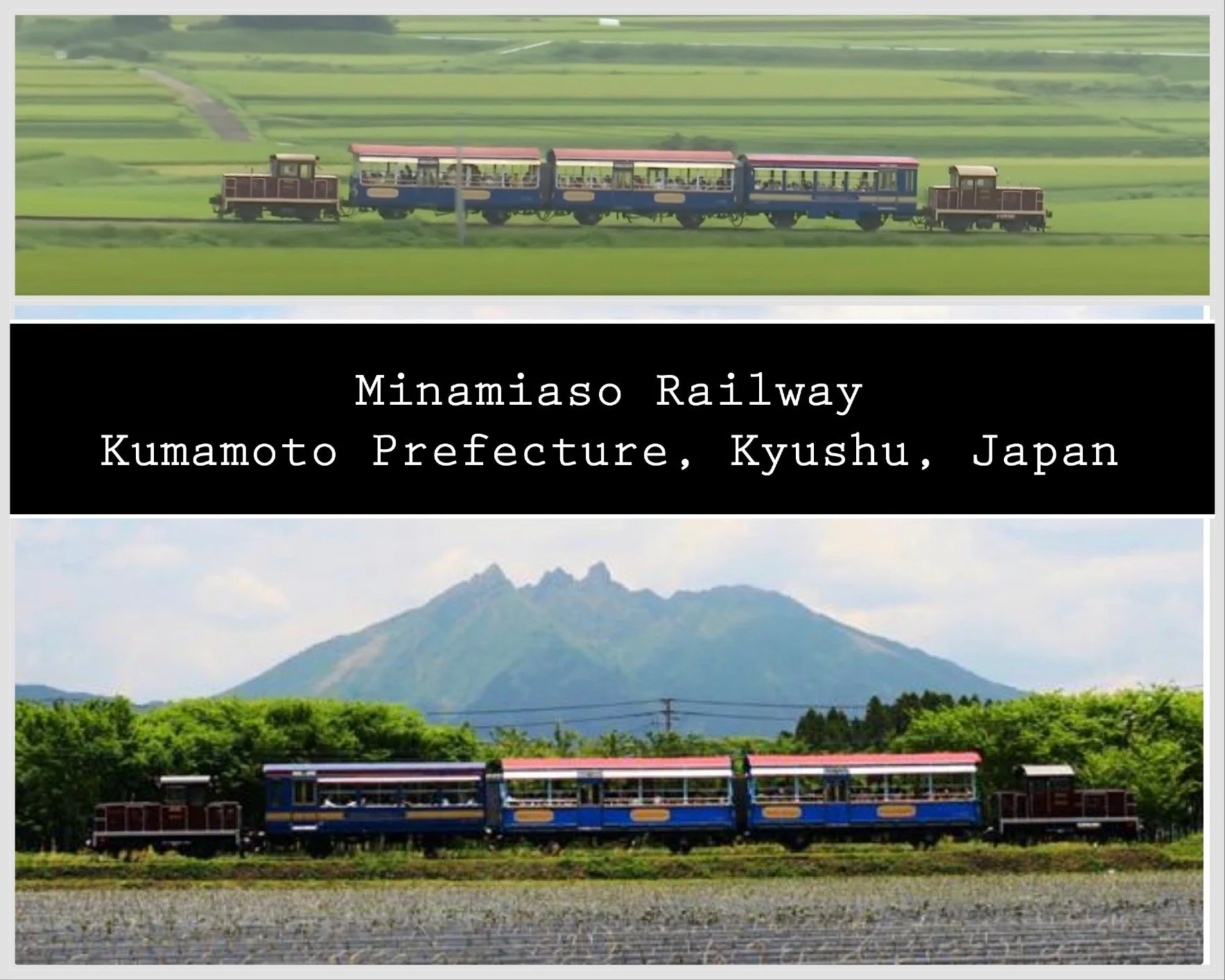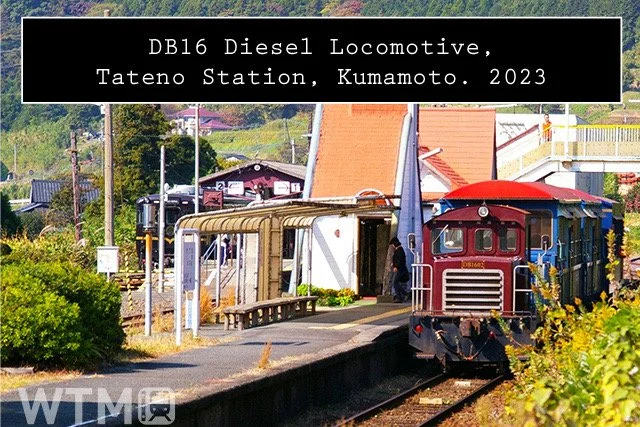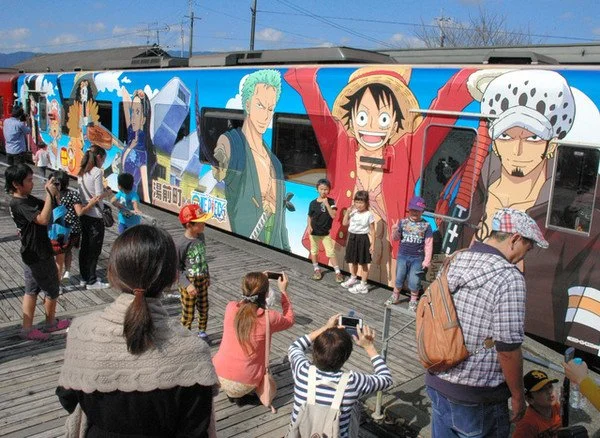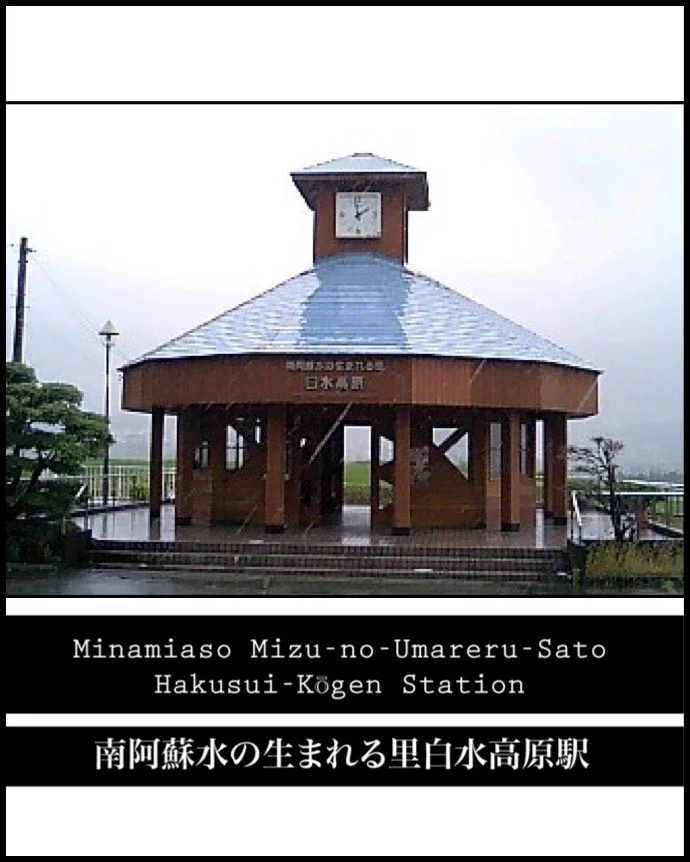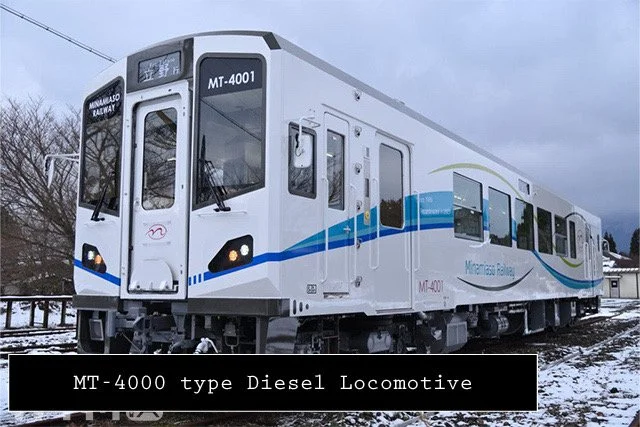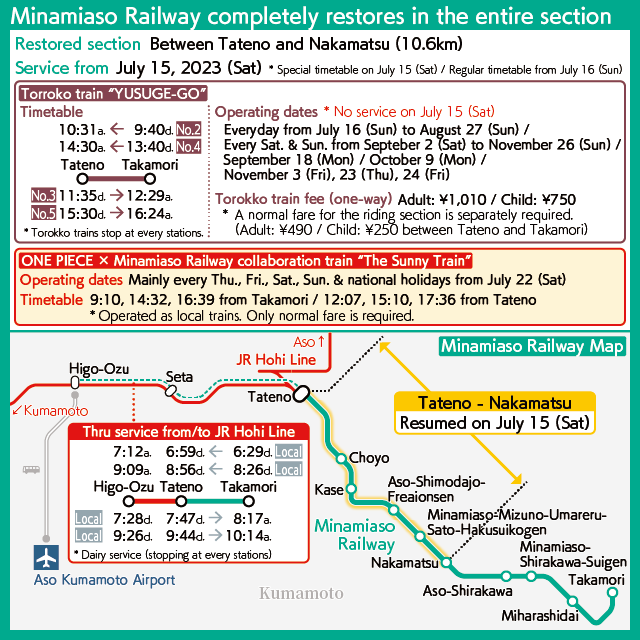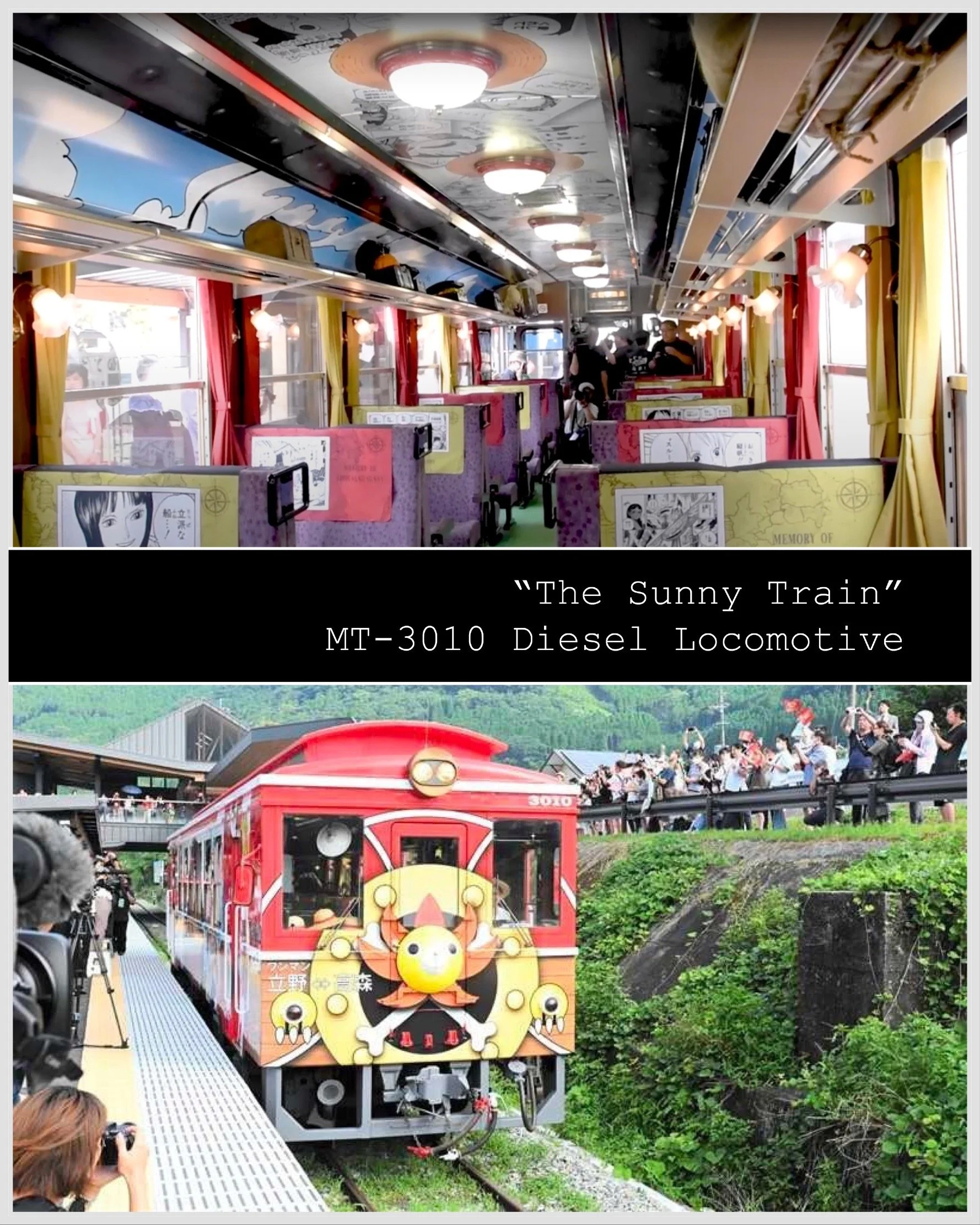When Destruction Becomes Opportunity:
Reconstruction & Revitalization of Minamiaso Railway
Kumamoto Prefecture, Kyushu, Japan
In April 2016, Kumamoto Prefecture on the island of Kyushu, Japan; and its surrounding areas were rocked by a 7 magnitude earthquake. Therein temporarly suspending service on the entirety of Minamiaso Railway’s Takamori Line. Stretching 17.7km (11mi) and 10 stations, the Takamori Line runs between Tateno Station, Minamiaso and Takamori Station, Takamori; snaking through the southern portion of Mt. Aso’s caldera. In other words, the landscape this rail line transverses is rugged, ridged, and above all geologically active.
Soon after the damage was surveyed. the less damaged 7.1km portion of the line between Nakamatsu and Takamori resumed service on July 31, 2016. Just 3 months after the earthquake struck. However, now was time for the difficult part, as the badly damaged 10.6km stretch between Tateno and Nakamatsu Stations needed rehabilitated. This included some of the most rugged parts of the route crossing the Tateno Valley. Local economies and all the commerce, tourism, and connectivity that such an important line brings with it was at stake. Furthermore, since the Takamori was the only line under the direction of Minamiaso Railway a total discontinue of service for most of the line seemed eminent.
According to Japan’s Ministry of Land, Infrastructure, Transport, and Tourism; costs to restore the line to its previous glory were set between 6.5-7 billion yen (roughly 43.6-47 million USD 2023). The risks to the local population and their respective economies were too great however, and the National Government of Japan stepped in with a historic move to grant 50% of the rehabilitation funds to the railroad with the other half coming from local governments along the line, as well as third-party campaigns.
One of which came courtesy of manga magazine, Weekly Shonen Jump. On October 24, 2016, just months after quake, Shonen Jump announced a One Piece campaign to raise funds for Kumamoto Prefecture. Eiichiro Oda, the creator of One Piece, is native to the city of Kumamoto. Literally a week after the announcement; to raise the spirits of the local effected. Two trains sporting One Piece artwork ran on the Kumagawa Rail Road and the then half-active Minamiaso Railway. This was just the start of Oda’s campaign to help restore and reinvigorate the damaged land to which he came from.
With peace of mind and a plan in hand; on-site major infrastructure restoration work in the most damaged of points began in March of 2018. Though it was less monetarily feasiable; for the local governments and citizens along the line it was absolutely imparitive that the Diiachi Shirakawa Bridge be restored. Spanning 60m above the surface of the Shirakawa River; this arch bridge provides stunning views of the valley below as trains glide overhead. Most important of which is the "YUSUGE-GO”, a torokko train or the Japanese equivalent to a scenic or sightseeing railway. Not only do you get a spectacular view of the valley, but also the Aso Caldera can be seen for much of the trains route. However, just like any other scenic railway availability of excursions is seasonal with Saturday and Sunday rides offered all year round and an adult roundtrip ticket costing 1400¥ or around 9.50 USD. That’s an incredible deal for the sights!
Overall, not only was the line going to be restored, but it was going to be more sustainable, more efficient, and more connected than it ever had before. Local governments along the rail line truly took this tragedy as an opportunity to improve upon not only the immediate area around the line, but the region as a whole. That’s a level of passion and togetherness that not only finishes a project of this scale, but makes it sustainable.
Sustainability
Physical sustainability is only half the battle. The real sturdy foundation that promotes an infrastructure project to be truly sustainable happens before any physical foundation is poured. The systems of the operation and how management of said operation is as, if not more, important. For the Minamiaso Railway, this was a chance to renew operating structure to an “upper and lower separation system.” Now, without getting too much into government jargon. Japanese government of all levels just has overall more power to restructure businesses based on proposals given. Kumamoto Prefecture, Takamori Town, and Minamiaso Village governments established “The Minamiaso Railway Management Organization” to own and manage railway land and facilities. This organization became a 3rd-class railway operator, which in Japan means they build the dang thing and take care of it. In this case, they take care of it for a 2nd-class railroad operator to use. That 2nd-class operator is the Minamiaso Railway; who’ll focus on business operations, passenger relations, and the promotion of use to increase the profitability of the line. In this, operation of the railway creates a positive feedback loop where the intent is efficiency, not bureaucracy. Each side of the business is doing their own job to ensure connection with the other.
Efficiency
Smooth operators are more efficient and even a socialist can see that when you’re more efficient you MAKE MORE MOOLAH. Of course, this positive feedback loop cycles again and again until profitability can be seen and even a commie can see that you can buy things with currency. Well, if you’re a proper commie you spend that green confetti on the public sector. Well in November of 2022, that time finally arrived for the Minamiso Railway with the arrival of the first new model train to the line in 25 years. The “MT-4000” started commercial operations in April of 2023. This diesel locomotive sports a white car body decorated with flowing line said to be inspired by the Shirakawa River and the Five Peaks of Aso, both important fixtures of the region. Due to the popularity of the line with tourists and an effort to be more inclusive; the line features guidance in multiple languages. Also physically versatile, the MT-4000 type is equipped with a driving safety braking system that supports entry onto the nearby Hohi JR Line; which meets up in Tateno, the line’s current Eastern terminus.
Connectivity
Not only that, but with the implementation of this new technology on the MT-4000. Plans for eastern expansion of the Minamiaso Line to JR Hohi Line’s Seta and Higo-Ozu Stations are in the works. Increasing the number of stations you can change lines up benefits both lines, as well as his means more versatility for passengers switching lines. Furthermore, this means better frequencies on the line; as there will be two new local round trip trains per day running between Takamori and High-Ozu in the morning. Continuing our positive feedback loop, with better connectivity to the greater region comes increased accessibility and the ease of mobility. The loss and yearning for that level of mobility and connectivity is what the locals along the line felt during that more than 7 year span of time.
After all that time, on July 15, 2023 operation resumed to literal fanfare and festivities. Locals, government officials, and train nerds camped out that their local stations. When the day finally came entire communities held festivals and well deserved celebrations took place. Most important, Eiichiro Oda of One Piece manga fame comes back into our story with a collaboration train as the new symbol for the line’s reconstruction. This MT-3010 type diesel locomotive is outfitted with Straw Hat Pirate specifications and took its maiden voyage June 22, 2023; being christened as “The Sunny Train.” When the entire line reopened, digital tickets that allow you 24 hour access to train and bus routes on the Minamiaso Railway, JR Kyushu Line, and Kyushu Sanko Bus Line were made available through the “my route” app. Additionally, due to the popularity of the line and to further promote it; a free-fare area was established around the Minamiaso Railway.
I found researching this one pretty fun! It’s a story of resilience so strong to not only rebuild, but improve and sustain in the process. For the first time since that day in April of 2016, the Minamiaso Railway has a promising future and its locals can breathe a sigh of relief and ride the train.
Sources //
https://www.mt-torokko.com/2023/02/03/5967/
https://en.wtmnews.net/202307101937
https://japantravel.navitime.com/en/area/jp/spot/02301-1600158/


